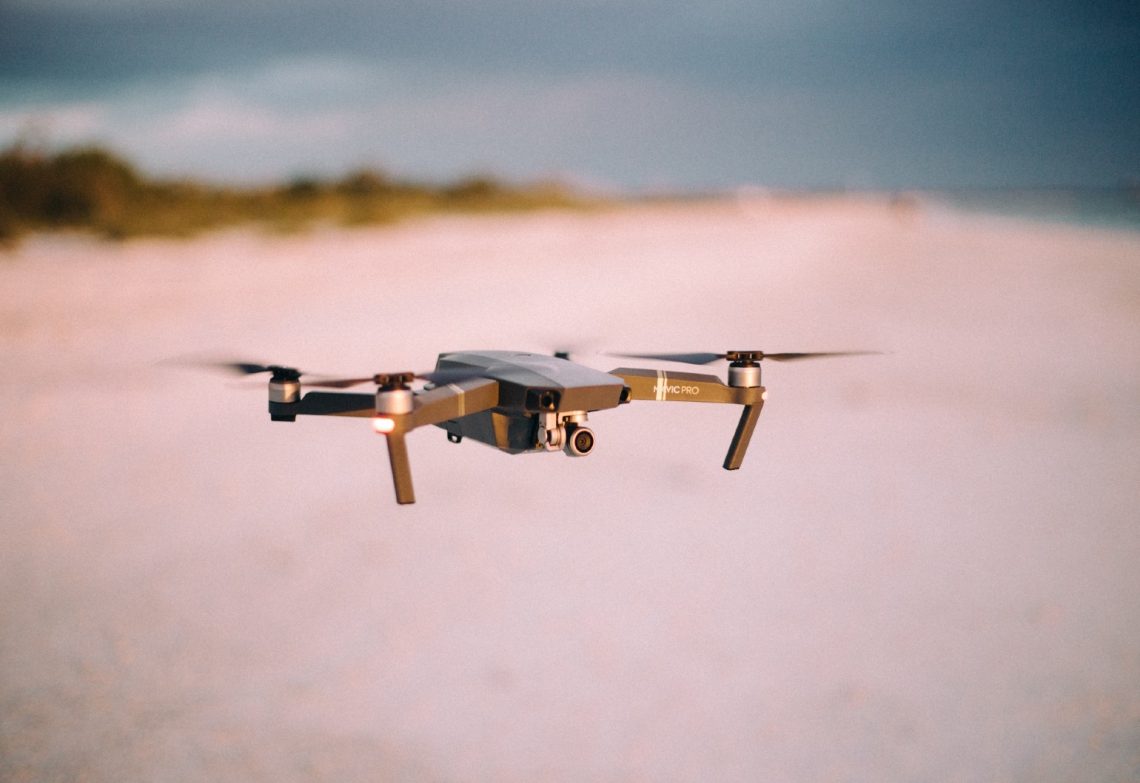A group of university researchers developed a drone capable of monitoring heart rate and other vital signs from a distance. The innovation has opened up conversations around the ethics of surveillance and the implementation of new technology.
From vaccines to rapid antigen testing, the COVID-19 pandemic has brought about many significant developments in technology, innovation and human systems. Engineering has been no exception.
For a team of researchers at the University of South Australia (UniSA), the increased attention on public health and vital signs monitoring triggered by the pandemic dovetailed with their existing development of a remote measurement system of vital signs using drones.
A new perspective
The UniSA research team, led by Engineers Australia Fellow and Chartered Professional engineer Professor Javaan Singh Chahl FIEAust CPEng, started work on the project years ago.
“I chose the best of our PhD students, and with enormous effort we managed to make a reasonably reliable piece of software that can measure heart rate and breathing in three to four months,” Chahl said, who is Professor of Sensor Systems at University of South Australia, and Joint Chair of Sensor Systems of the Australian Government’s Defence Science and Technology Group.
The project had its genesis in two student-led projects in his faculty.
“I had a student from Iraq who had seen situations where the incubators holding neonatal infants lost power, preventing anyone from knowing the state of the infants. The mortality rate became quite high.”
The student intended to use photoplethysmography, “the same technology used in Fitbits”, to remotely detect changes in someone’s heart rate by measuring blood flow signal from the face’s vasculature.
Chahl put this student in contact with another researcher whose research interests pertained to using drones to understand patterns of human activities, and prompted the pair to consider if it were possible to measure a person’s heart rate remotely, using a drone.
“It’s interesting technologically, because most people just don’t believe it’s possible,” he said.
Further experimentation opened up a number of potential hypotheses, including whether it was possible to use a drone to detect the breathing of someone trapped underneath debris.
“We also published a paper on doing the same with animals,” Chahl said. “But it’s a little harder because animals don’t blush, so you have to look at movement on the wall of the thorax from both the heart and breathing simultaneously.”
Pandemic pressures
The team had potential implementations for the health sector front of mind during development.
“We tested on a drone, but also made an example of a ‘kiosk’ that could measure people’s vital signs [in situ],” Chahl said, which could potentially identify if the individual had a fever, elevated heart rate or unusual breathing pattern.
The program “died down” for a while before receiving an uptick of interest in early 2020 when Canadian drone developer Draganfly and its US partners approached his team. With the recent emergence of COVID-19, the question was mooted as to whether they could use the technology to make an informed assessment of whether a person might be infected.
Using drones seemed useful, he noted, when examining the state of a group of people from a safe distance. The path towards realisation was not smooth-sailing, however.
“Everything was scavenged,” he said. “We couldn’t buy a decent Nvidia GPU card for love or money, and so we were stripping computers for parts. We were personally calling people in computer shops we’d known 10 years ago to find these cards.
“It was a special kind of nightmare.”
The public’s response, too, proved noteworthy.
“A lot of the publicity from that time was about privacy, and I was conscious of that,” he said. “My main concern was not coercively establishing people’s physical state.”
Privacy considerations
According to Dr Simon Longstaff, Executive Director of The Ethics Centre, a drone capable of remotely detecting vital signs could be justified in certain circumstances.
“Suppose there’s been a terrible landslide, and you want to provide an early intervention that provides rescue medical care for those who are injured,” he said.
“With this kind of technology, you could survey a scene of disaster, pick up signs of life and direct rescuers and medical care during critical times. That’s a case where you could say the technology has been deployed for an altruistic benefit.”
A problem arises, however, when such a technology “has the capacity to observe people at that level of intimacy without anyone being aware it’s occurring”.
“The fact that you’re able to monitor people and derive a benefit from them starts to violate a very important ethical principle, which is that you should never use a person simply as a means to an end, because that’s a violation of the principle that every person has an intrinsic dignity,” he said.
“There’s a very important principle that can does not imply ought. The fact that you can do something doesn’t mean you ought to do it.”
Longstaff’s advice for researchers and industry players working in the field of drones and remote surveillance is plain.
“Identify clearly what fundamental ethical values and principles were identified as the basis for guiding their technology. They must be able to prove to a disinterested person that those values and principles have been embedded into the design and control.
“Don’t create technologies that risk using people merely as a means to an end, and ensure the technology is not developed in ways where it could be put to use for harmful activities.”
Keeping technology in the right hands is something Chahl stands by.
“We usually break in the door, as it were, with a technology, but normally we don’t keep progressing it – that’s for a different type of researcher.”



